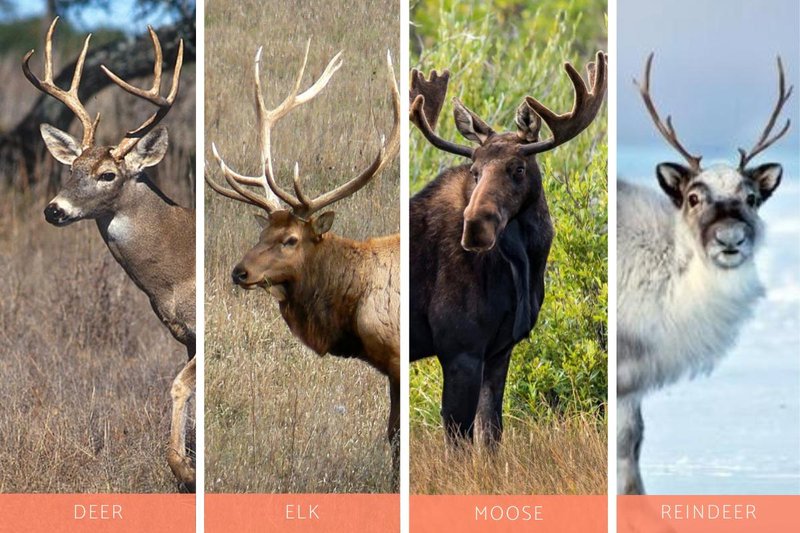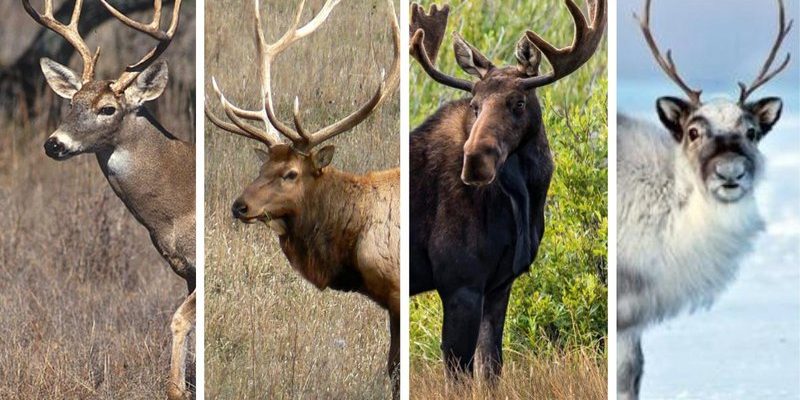
Let’s take a moment to explore 10 animals that remind us of reindeer. Imagine you’re on a road trip through the Arctic tundra, and you spot a herd of reindeer. As you cruise, you might catch a glimpse of some relatives that share a few features, but each has its own special charm. We’ll dive into what makes them similar and how you can spot the differences.
1. Caribou
You might be surprised to learn that reindeer and caribou are essentially the same species! These animals are just called different names depending on where you find them. In North America, we refer to them as caribou, while in Europe and Asia, they’re known as reindeer.
What’s the difference? Well, one clear distinction is that reindeer are often domesticated, while caribou tend to be wild. Caribou also migrate long distances, sometimes traveling over 3,000 miles in search of food. You can spot them by their larger size and darker fur in summer, which helps them blend into the dense forests they prefer.
2. Elk
Elk are another close relative of reindeer, and they’re often found in North America and parts of Asia. These animals are significantly larger than reindeer, with males weighing up to 1,100 pounds. You can easily recognize them by their impressive antlers, which can span up to four feet!
Honestly, if you see a herd of elk, they might remind you of reindeer at first glance, but their bodies are more robust and sturdy. They inhabit forests and grasslands, and while they don’t migrate as far as caribou, they still move to find better pastures during different seasons.
3. Moose
Now, let’s talk about moose. These gentle giants are the largest members of the deer family. Like reindeer, moose have long legs and wide antlers, but they’re built much bulkier. A full-grown moose can weigh over 1,500 pounds!
If you want to tell a moose apart from a reindeer, look for the long, droopy nose and the unique “bell” (a flap of skin) that hangs under their throat. They love to nibble on aquatic plants and are often found near lakes and rivers. Imagine a moose wading through the water, munching on some tasty greenery—that’s quite the image!
4. Sika Deer
Sika deer, native to East Asia, are another fascinating cousin of reindeer. They are smaller in size and have a beautiful spotted coat that can range from light brown to dark reddish-brown, almost like a soft carpet!
If you see a sika deer, you might notice the distinct white markings on their neck and legs, which are perfect for camouflage among the trees. Unlike reindeer, sika deer are much more solitary creatures, preferring to roam alone or in small groups rather than large herds.
5. Axis Deer
Axis deer, also known as chital, are known for their stunning, spotted coats—which can remind you of reindeer in their coloration. They are native to India, but their gorgeous patterns can make them seem familiar.
What sets axis deer apart is their unique vocalization; they make a series of sharp barks that are quite distinct from the softer sounds of reindeer. They’re also social animals and can be found in herds, often gathered near water sources. If you ever spot a group, their playful nature will certainly catch your eye.
6. White-tailed Deer
Ah, the white-tailed deer. Common throughout North America, they’re one of the most recognizable deer species. You’ll know them by their characteristic white tail that they lift when startled.
While they’re smaller than reindeer, the main similarity lies in their antlers, which grow in a similar manner. White-tailed deer are very adaptable and can thrive in various habitats, from forests to suburban areas. Just keep an eye out for that waving white flag—you’ll see it often!
7. Black-tailed Deer
Black-tailed deer are another variety worth mentioning. Found on the west coast of North America, they share some physical traits with reindeer, like the shape of their bodies and antlers, but they have a distinctive black tail, hence the name.
These deer tend to stay in forested areas, feeding on shrubs, leaves, and grasses. If you come across a black-tailed deer, you might notice that they’re a bit more secretive than reindeer, often hiding in the underbrush. Their shy nature can make spotting them quite a treasure.
8. Fallow Deer
Fallow deer are also charming relatives to consider. Their unique coat can range from white to dark brown, often displaying spots similar to those seen on sika and axis deer. They are typically found in Europe and are known for their graceful appearance and broad, palmate antlers.
In terms of behavior, fallow deer are social creatures and can often be seen in mixed groups. Unlike reindeer, they don’t migrate but stick to specific territories. Their aesthetic appeal has made them popular in parks and preserves where you might see them grazing in the open.
9. Red Deer
Red deer are among the largest species of deer in the world, and they share a close connection with reindeer. In fact, they have a similar diet, primarily consisting of grasses and shrubs.
One way to tell red deer apart is by their size—they are significantly taller and heavier than reindeer. Plus, their antlers are larger and more branched, giving them a regal appearance. You might find them in forests, grasslands, or even mountainous areas, showcasing their adaptability.
10. Père David’s Deer
Last but not least, we can’t overlook Père David’s deer. Native to China, this species is unique and has physical traits reminiscent of reindeer. They have long, flat antlers and a striking resemblance in their body shape.
Unfortunately, Père David’s deer are quite rare, as they faced extinction in the 20th century but have made a comeback thanks to conservation efforts. They mainly inhabit wetlands and are known for their sociable nature, often being found in herds that can include both males and females. You might even catch them splashing around in shallow waters!
In conclusion, reindeer have quite the family! From caribou to fallow deer, these animals share characteristics that make them closely related yet unique in their own right. Next time you spot one of these fascinating creatures, you can appreciate not just their beauty but also how they fit into the diverse tapestry of the animal kingdom. Whether it’s their size, markings, or social behaviors, each has a story to tell. Keep exploring, and you’ll discover even more about these incredible animals.

